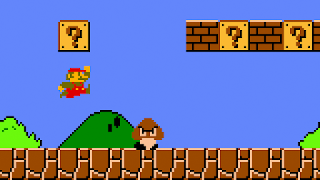The first video game ever made ?
Higinbotham’s Tennis for Two was actually preceded by several
other inventions — one in the late 1940s and two in the early 1950s. But it
would not be fair or correct to award the title of “the first video game” to
any one of these specific inventions.
In 1948, ten years before Higinbotham’s Tennis for Two,
Thomas T. Goldsmith Jr. and Estle R. Mann patented the “Cathode-Ray Tube
Amusement Device,” making this currently the earliest-documented video game
predecessor. The amusement device, however, required players to overlay pictures
or illustrations of targets such as airplanes in front of the screen,
dovetailing the game’s action. This was unlike Higinbotham’s Tennis for Two,
which entirely displayed the game’s visuals on the screen.
Another video game-like device, the Nimrod computer, was
built by Ferranti International and first displayed at the Festival of
Britain’s Exhibition of Science in 1951. Although the computer was built to
play the century-old game of logic and strategy called “Nim,” the electronic
version of the game was specifically designed to demonstrate the processing
power of the new computing device. This was in contrast with Tennis for Two,
which was designed to be played for fun. In addition, the Nimrod computer did
not use a cathode-ray tube display with elements that appeared to “move” on
screen like Tennis for Two. Instead, it used a set of fixed lights that turned
on and off and a legend to describe what was happening throughout the
demonstration.
Then, in 1952, A.S. Douglas at the University of Cambridge
created an electronic version of Tic-Tac-Toe, which he titled “OXO” (or Noughts
and Crosses). This single-player “game” was designed for academic purposes —
Douglas used the electronic OXO on the famous Electronic Delay Storage
Automatic Calculator, or EDSAC, to study the “Interactions Between Human and
Computer.” Like electronic Nim, electronic OXO was not designed to be
entertaining.
Some argue that Tennis for Two or any one of the earlier
predecessors to the modern video game cannot be titled the first “video” game
because not one of them displayed a “video” signal. The term “video” implies
that electronic signals are converted to images on a screen using a raster
pattern, a series of horizontal lines composed of individual pixels. Although
older oscilloscopes, televisions, and computer screens all used cathode-ray
tubes, oscilloscopes visually display changes in electrical voltage; they do
not use the raster process. While Higinbotham’s system did not create a video
signal, he had created a unique way to alternate among the computer’s outputs
with the transistor switching circuit, creating the image of a tennis court and
allowing players to control a movable ball seen on a screen, just like a modern
video game.

Comments
Post a Comment